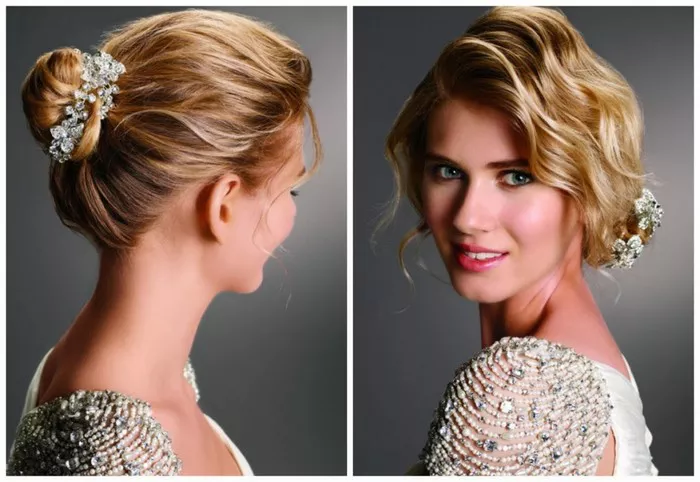In the ever-evolving landscape of beauty and self-expression, the allure of bleached hair often beckons individuals seeking a bold transformation. However, the journey to platinum perfection is not without its challenges, and the aftermath of damaged bleached hair can leave many searching for effective remedies. In this in-depth exploration, we embark on a quest to uncover the best way to treat damaged bleached hair, navigating through a myriad of solutions, techniques, and expert insights to revive the radiance of those once-lustrous locks.
Understanding the Toll of Bleaching: A Hair Journey Unveiled
Before delving into the solutions, it’s essential to comprehend the toll that the bleaching process exacts on the hair. Bleaching involves the use of strong chemicals, typically hydrogen peroxide, to strip the hair of its natural pigment. While this results in the coveted lightened shade, it also compromises the hair’s structural integrity, leading to damage that manifests in various forms:
Cuticle Damage:
Cuticle Disruption: The hair cuticle, the outermost layer protecting the hair shaft, can become disrupted during the bleaching process. This leaves the inner layers vulnerable to damage and moisture loss.
Protein Depletion:
Protein Breakdown: Bleaching disrupts the protein structure of the hair, primarily keratin. Protein loss weakens the hair, resulting in brittleness and increased susceptibility to breakage.
Moisture Imbalance:
Natural Moisture Stripped: The bleaching process strips the hair of its natural oils, leading to a moisture imbalance. Dryness and frizz often accompany bleached hair.
Porosity Issues:
Increased Porosity: Bleached hair tends to become more porous, absorbing and losing moisture rapidly. This heightened porosity contributes to issues such as tangling and further damage.
The Best Way to Treat Damaged Bleached Hair: A Multifaceted Approach
Hydration Therapy:
Deep Conditioning: Incorporating regular deep conditioning treatments is crucial for restoring moisture to damaged bleached hair. Use products with hydrating ingredients like argan oil, shea butter, and hyaluronic acid.
Hydrating Masks: Introduce hydrating hair masks into your routine, focusing on formulas designed to replenish and nourish dry, damaged strands.
Protein Replenishment:
Protein Treatments: Rebuild the weakened protein structure of bleached hair with protein-rich treatments. Products containing hydrolyzed keratin, collagen, and amino acids can help strengthen the hair shaft.
Balanced Approach: Achieve a balance between moisture and protein treatments to address both aspects of damage without overloading the hair.
Gentle Cleansing:
Sulfate-Free Shampoos: Choose sulfate-free shampoos to cleanse the hair without further stripping its natural oils. Sulfate-free formulations are gentler and help maintain a healthier scalp.
Heat Styling Caution:
Reduced Heat Usage: Minimize the use of heat styling tools to prevent additional stress on damaged bleached hair. When styling with heat is necessary, use heat-protectant products to mitigate damage.
Trimming for Restoration:
Regular Trims: Schedule regular trims to gradually remove damaged ends and prevent split ends from traveling up the hair shaft. This promotes overall hair health and helps maintain a more polished appearance.
Protective Styling:
Low-Manipulation Styles: Embrace protective styles that minimize manipulation and reduce friction, such as braids, twists, or updos. These styles help prevent breakage and promote hair recovery.
Nutritional Support:
Balanced Diet: Ensure a well-balanced diet rich in vitamins and minerals essential for hair health. Consider supplements like biotin, collagen, and omega-3 fatty acids to support hair growth and strength.
Professional Intervention:
Consulting a Stylist: Seek guidance from a professional stylist experienced in working with damaged and bleached hair. A stylist can provide personalized advice and recommend salon treatments tailored to your hair’s needs.
Debunking Common Myths About Treating Damaged Bleached Hair
One-Time Fix: Repairing damaged bleached hair is an ongoing process rather than a one-time fix. Consistent care and maintenance are essential for long-term recovery.
All Products Are Equal: Not all hair care products are created equal. Tailor your product selection to the specific needs of damaged bleached hair, focusing on ingredients known for their reparative properties.
Natural Oils Alone Are Sufficient: While natural oils offer benefits, they may not be sufficient for repairing extensive damage. Supplementing with targeted treatments is often necessary.
Conclusion: A Journey of Renewal and Resilience
As we conclude this exhaustive exploration into the best way to treat damaged bleached hair, it becomes apparent that the path to hair recovery is multifaceted. From hydration therapy to protein replenishment and protective styling, each step contributes to the overall renewal of bleached and damaged strands.
In the dynamic realm of beauty and self-care, the journey to revive damaged hair is not just about restoring external luster; it’s a testament to resilience, self-love, and the transformative power of conscious hair care. As you embark on your journey to restore the radiance of your bleached locks, may it be a voyage marked by patience, self-discovery, and the joy of witnessing your hair regain its vitality.
In the tapestry of hair care, the best way to treat damaged bleached hair is not a singular destination but a continuous journey of renewal—a journey that celebrates the beauty of transformation and the unwavering resilience of every strand.

